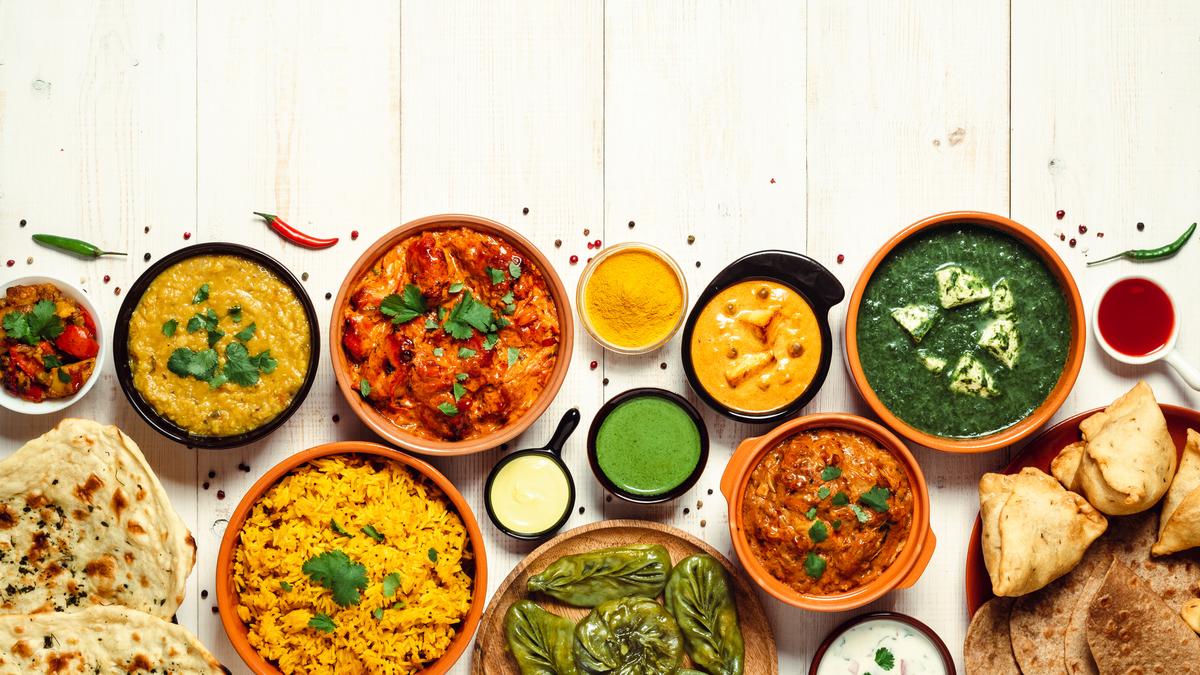
Understanding India’s transitioning food patterns, processed foods, and how they impact health Premium
The Hindu
Explore the evolution of Indian meals, the impact of modern diets on health, and the importance of nutrition literacy.
Picture a typical Indian meal from over a century ago: fewer ingredients were used, it included whole grains such as unrefined cereals and coarse millets, whole legumes, crude oils, locally-grown vegetables and fruits, meat from animals fed with natural diets, and dairy products. Diversity in meals arose from seasonally available produce, reflecting local or geographical limitations. Meals were freshly prepared daily and consumed at designated times, ensuring maximum retention of nutrients, as there was no concept of storing cooked food.
Fast forward to today, and the pattern may be the same, but the quality of meals has changed dramatically. Modern meals are more likely to contain high amounts of sugar, salt, and fat. The ingredients now predominantly include refined cereals, polished grains, refined oils, and meat from farm-bred animals. While these meals are highly palatable, they are often devoid of essential nutrition and are frequently accompanied by energy-dense beverages.
Food processing has emerged as an essential tool to make food edible and convenient, especially given the complexities of modern life. It has become a boon for many, by lowering the work burden for overworked individuals, offering variety to younger populations, creating employment at various levels, and saving tonnes of agricultural produce through systematic handling, transport, and storage.
Over the past seven decades, food processing has evolved significantly, moving from basic processed products to today’s ultra-processed items. This transformation utilises highly automated manufacturing facilities and advanced techniques to create shelf-stable and ready-to-eat packaged foods. While these innovations have greatly influenced our food patterns, have they been entirely beneficial for humanity?
The modern diet has experienced a major shift in energy distribution derived from carbohydrates, proteins, and fats. In contrast to traditional diets, a larger proportion of energy in modern diets comes from simple carbohydrates and fats, leading to a significant reduction in dietary fibre. Additionally, the type of fat consumed has shifted from crude oils to refined oils and trans fats, resulting in diets that lack essential minerals and vitamins. The prevalence of calorie-dense fats and sugars, combined with lifestyle changes involving reduced physical activity, has led to an increase in obesity/overweight issues, not only in urban populations but also among rural communities. This shift is further exacerbated by rising disposable incomes, which have enabled the rise in unhealthy foods, and the advent of quick commerce.
According to a recent study published in The Lancet by the Indian Council of Medical Research, the overall prevalence of diabetes among Indians is around 11.4%, with 15.3% of the population being pre-diabetic—individuals whose blood sugar levels are higher than normal, placing them at greater risk of developing diabetes. The prevalence of hypertension is estimated to be around 35.5%. Additionally, obesity is becoming more common, with 28.6% of the population classified as obese and 39.5% experiencing abdominal obesity (ICMR-INDIAB National Cross-Sectional Study, The Lancet, Vol. II, (7), pp. 474-489, July 2023). Similar trends were observed in the National Family Health Survey-5, which included data on diabetes prevalence and hypertension for the first time.
These statistics are alarming and suggest an ever-increasing burden of non-communicable diseases, which have long-term implications, such as reduced productivity, diminished physical and mental work efficiency, and higher healthcare costs.





















 Run 3 Space | Play Space Running Game
Run 3 Space | Play Space Running Game Traffic Jam 3D | Online Racing Game
Traffic Jam 3D | Online Racing Game Duck Hunt | Play Old Classic Game
Duck Hunt | Play Old Classic Game











